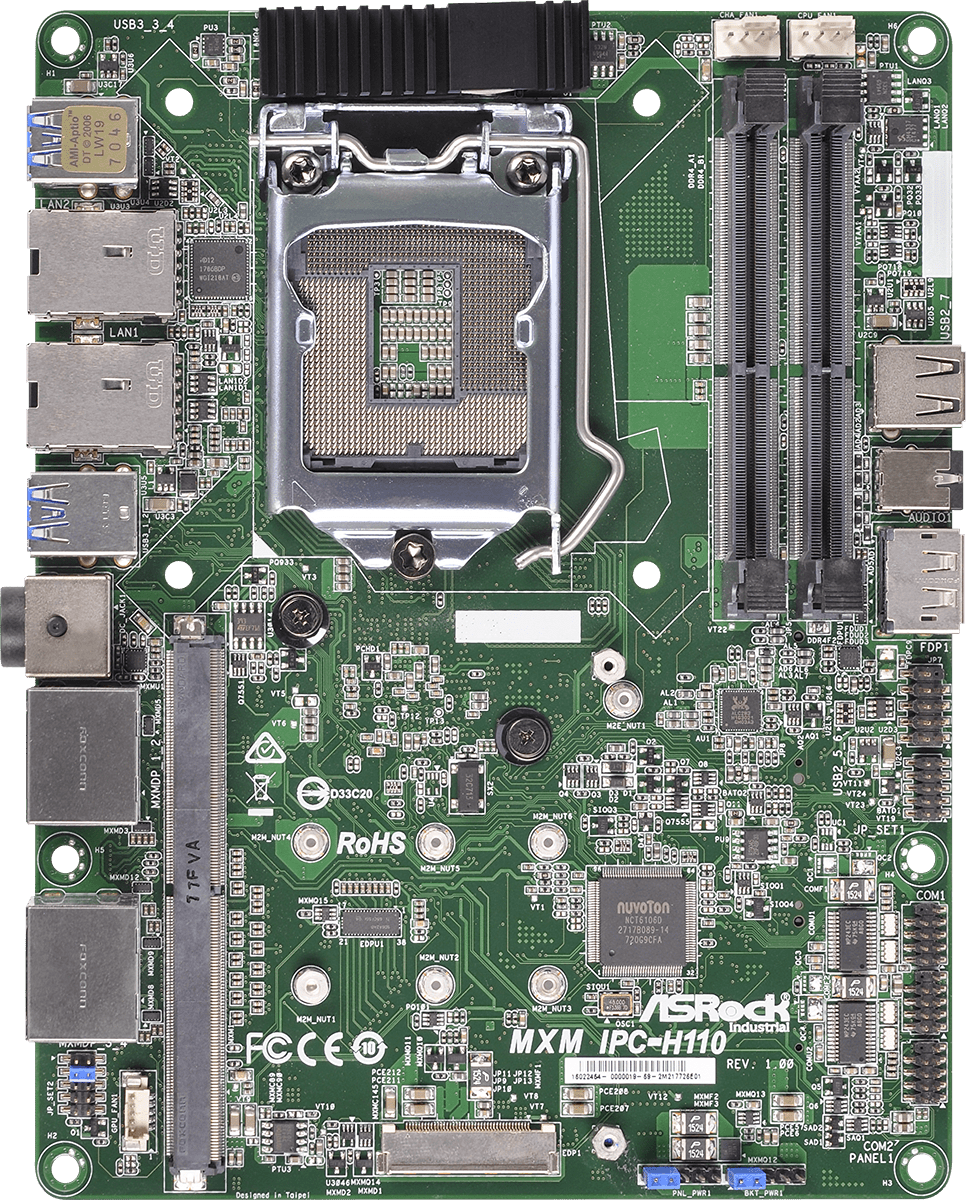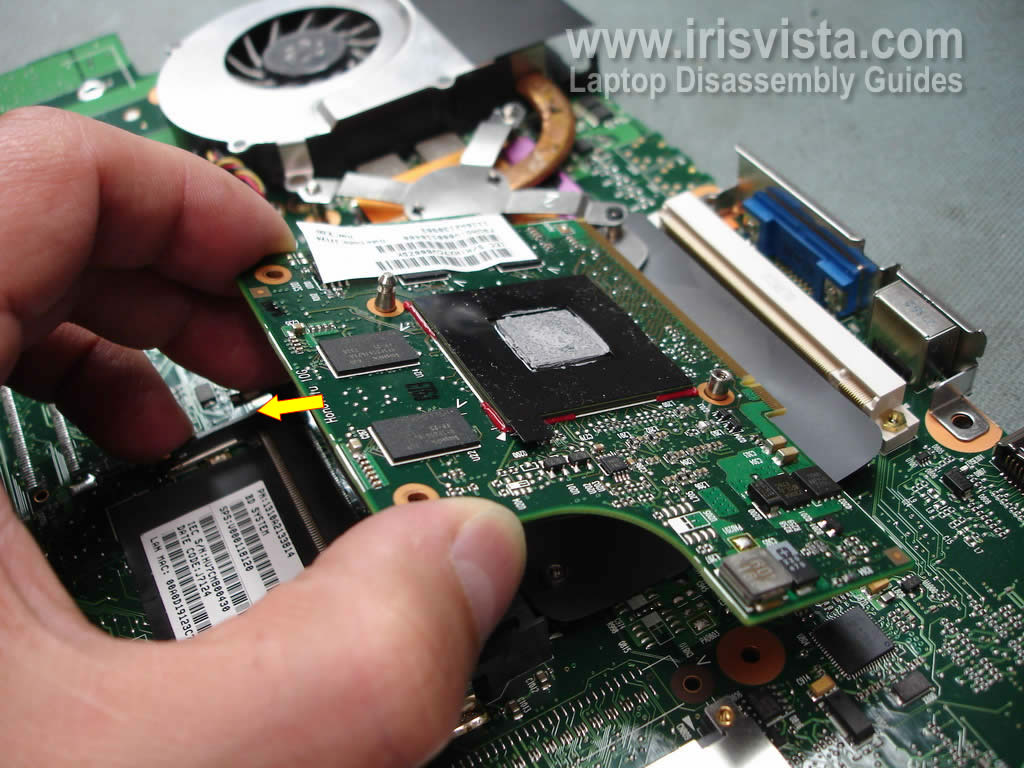Mini-STX (aka MiniSocket Technology EXtended, Intel 5x5) is a computer motherboard form factor that supports upgradable processors. The motherboard size is 147×140 mm, which is between Intel's NUC (next unit of computing) motherboards and Mini-ITX boards that are popular in small form-factor builds.

ASRock extended it by two inches to add an MXM slot creating Micro-STX.
Comparisons with NUC[edit]
A Mobile PCI Express Module (MXM) is an interconnect standard for GPUs (MXM Graphics Modules) in laptops using PCI Express created by MXM-SIG. The goal was to create a non-proprietary, industry standard socket, so one could easily upgrade the graphics processor in a laptop, without having to buy a whole new system or relying on proprietary vendor upgrades. Slot mxm Chris was a bit worried when James Acaster and Josh Widdicombe dropped by, only because when actors and comedians take to the wet seat, it turns out they are pretty skilled in the art of keeping a straight face.No sissy crap, simply put it's how hard work get's it done, going from nothing to something, negative to positive.
When compared with NUC, the Mini-STX form factor:
- Has 3/2 the motherboard area of a NUC.
- Has processor sockets, allowing for users to upgrade or replace processors.
- Offers the possibility of dedicated GPUs via MXM (on some models produced by ASRock).
- May have more I/O options due to the larger space available on the back of the board.
Comparisons with Mini-ITX[edit]
When compared with Mini-ITX, the Mini-STX form factor:
- Has a motherboard area 3/4 the size of Mini-ITX.
- Is usually limited to SO-DIMMs, rather than full-size DIMMs.
- Lacks a full-size PCIe expansion slot, limiting users to MXM GPUs or less powerful, integrated GPUs and APUs.
- May have less I/O options due to the reduced space available on the back of the board.
- May use a 2-in-1 SATA+power cable instead of separate SATA and power cables.
References[edit]
- https://www.asrock.com/nettop/AMD/DeskMini%20A300%20Series/ (AMD AM4)

Home > Articles > Hardware > Upgrading & Repairing
MXM: Finally, an open standard for laptop graphics
MXM finally provides a way for a wide variety of laptop computer users to enjoy the same upgradeable graphics that desktop computer users have long enjoyed
A Brief History of Upgradable Graphics in Laptops
Ever since IBM developed the first true laptop computer, the IBM PC Convertible, in 1986, laptop computer users have been frustrated by the limitations of their computers built-in graphics.
Whether a laptop uses a discrete graphics chip on the motherboard (such as the current ATI Mobility Radeon series or the nVidia GeForce Go series) or a chipset with integrated graphics (available from various vendors), with few exceptions, the graphics your laptop graphics came with were the graphics you were stuck with.
In almost every case, if you werent satisfied with the amount of graphics memory, the resolution available for external graphics, the 3D rendering performance, lack of dual-monitor support...the only officially-sanctioned alternatives you had were to keep using your current model with its inadequacies or replace the entire laptop.
There have been a couple of exceptions to this rule. As I discuss in my book Upgrading and Repairing Laptops, it is possible to purchase and install graphics modules with better features for a few laptop computer models. However, this requires that the user determine which module will work, ordering the appropriate module from the laptop vendors parts department, partially dismantling the computer, removing the old module, inserting the new module and replacing the graphics drivers provided as part of a laptops operating system image. Consequently, this is not a solution available to most users.
The second exception was introduced recently by Alienware (www.alienware.com) in its Area-51m line of gaming laptops. These laptops can be upgraded with a variety of ATI and NVIDIA graphics processors. However, these modules are available only from Alienware making them a proprietary solution.
Until the introduction of MXM, the Mobile PCI Express Module standard, by NVIDIA (www.nvidia.com), there has been no real open standard for interchangeable laptop graphics. MXM finally provides a way for a wide variety of laptop computer users to enjoy the same upgradeable graphics that desktop computer users have long enjoyed.
MXM: Based on PCI Express
PCI Express is the new standard for high-speed expansion slots in desktop computers. Before PCI Express, desktop and laptop computers have long followed divergent paths in their expansion slots. Desktop computers have moved from 16-bit & 32-bit versions of the original IBM PC/ISA slot architecture to the 32-bit and 64-bit PCI slot, while laptop computers have moved from the 16-bit PC Card (PCMCIA) slot to its 32-bit backwards-compatible sibling, the CardBus slot.
However, PCI Express and MXM use the same signals. Both PCI Express graphics cards and MXM both support 16 lanes of PCI Express data. Each PCI Express lane supports 2.5Gbps performance.
MXM modules are designed to fit into the side and bottom of a laptop computer, latching into place in a manner somewhat similar to that used by Mini-PCI adapters. MXM uses a 230-pin connector.
MXM Features
MXM modules, although they are based on PCI Express, differ in several ways. PCI Express graphics cards include their own VGA, DVI and TV-out connectors, while MXM modules will continue to use the integrated video connectors built into laptop computers, just as current laptops computers graphics solutions do today.
MXM modules are designed to support the full range of video output available on desktop and laptop computers today:
- VGA
- TV-out (S-video, HDTV, composite)
- DVI
- LVDS (built-in LCD panel)
Note that because MXM uses the video ports built into the motherboard design that the deciding factor controlling what video outputs are available on a given system is the design of the laptop itself.
A system designed to use MXM can also use integrated graphics by installing a loop-through card in place of the MXM module. This feature enables laptop designers to create laptops with low-cost integrated graphics which can be upgraded to use MXM graphics later.
Three Varieties of MXM Modules

MXM modules will be available in three sizes, aimed at the three distinct form factors used by laptop computers today, as shown in Table 1.
What Is An Mxm Slot
Table 1-MXM Modules Specifications
MXM | Width | Length | Max | Max Memory Size | Intended | Backwards-Compatible |
Type I | 70mm | 68mm | 18 watts | 128MB | Thin & light | |
Type II | 73mm | 78mm | 25 watts | 256MB | Mainstream | Type I |
Type III | 82mm | 100mm | 35 watts | 256MB | High-Performance | Type I, Type II |
As you see from Table 1, Type II MXM slots can also use Type I modules, while Type III slots can also use Type I or Type II modules. This backwards-compatibility capability provides additional flexibility for the laptop system designer.
Who Will Adopt MXM?
Mxm Graphics Card
Major portable computer manufacturers such as Quanta, Wistron, FIC, Uniwill, Clevo, AOpen, Tatung, Arima, Asustek and Mitac have all announced their intentions to produce MXM-based laptop computers. Most of these companies produce laptop computers for sale by major brand-name computer companies. Although MXM was developed by NVIDIA, it can be used by other vendors. The intent is to make MXM a true industry standard.
Although ATI is NVIDIAs biggest rival in the production of discrete and integrated graphics for laptop computers, ATI was not part of the MXM rollout. It will be interesting to see whether ATI adopts MXM or decides to develop a rival open standard. According to NVIDIAs MXM website, the MXM design can be used for ATI graphics chips and some vendors are already developing ATI-based MXM designs.
For Further Research
The official Mobile Graphics Low-Power Addendum to the PCI Express Base Specification Revision 1.0 can be downloaded from the PCI-SIG website (requires Adobe Reader) http://www.pcisig.com/specifications/pciexpress/PCI_Express_Mobile_Gra....
Mxm Nvidia
The official NVIDIA MXM website is available at http://www.nvidia.com/page/mxm.html.
The HexusNet review of the MXM module features excellent illustrations of the MXM connector and an MXM Type I module http://www.hexus.net/content/reviews/review.php?dXJsX3Jldmlld19JRD03NjU
Copyright©2004 Pearson Education. All rights reserved.
Mxm Module Card
Related Resources
What Is An Mxm Slot Online
There are currently no related titles. Please check back later.